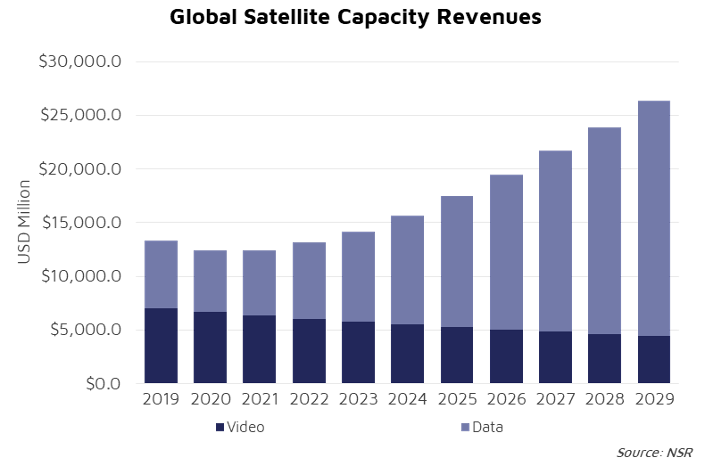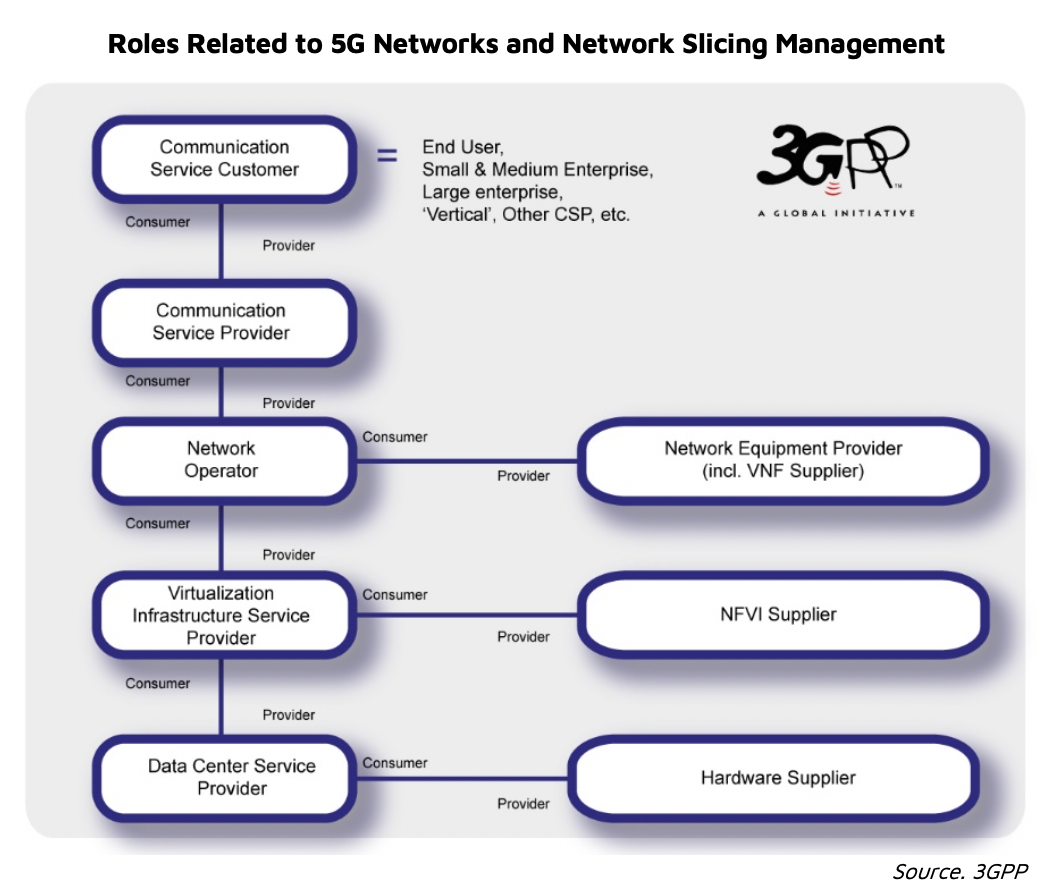5G and the Future of Capacity Leasing
When considering 5G, one might inadvertently focus on user-oriented characteristics such as latency or throughput. However, the reality is that one area where 5G will be more disruptive is on the backend of networks. Satcom is not different, and 5G will transform how network capabilities are delivered. Satcom actors therefore need to adapt their capabilities and offers to 5G to avoid missing the next wave of growth in the industry.

These are not easy times for the industry. The COVID-19 crisis only adds pressure to an industry that was already struggling to pivot towards new growth areas. The good news is that data verticals, where 5G in its wider meaning will be a catalyzer, show massive potential for growth. In fact, NSR’s Global Satellite Capacity Supply and Demand, 17th Edition report forecasts capacity revenues from Data-driven use cases to grow at double-digit rates in the 2019-2029 period. VHTS, NGSOs, virtualization and service orchestration are key technology drivers behind this potential growth. In order to make the most of these trends, the industry must embrace 5G by crafting strategies aligning with telco requirements and invest in technologies that seamlessly integrate into the data-driven ecosystem.
A New Way of Delivering Network Capabilities
Today, VSAT networks still mainly operate in siloed environments. From spectrum resource allocation, network operations or integration with terrestrial networks, satellite is still very rigid and has isolated procedures. Setting up a satellite network is still many times a custom process, difficult to replicate, escalate and integrate with other networks (3G/4G, hybrid-access networks, etc.). Satellite will always keep its peculiarities (bandwidth efficiency requirements, physical constraints, etc.), but adopting standardized service orchestration, which is part of the 5G transformation, will make satellite networks much more user-friendly.
While managed services are an interesting first step in this direction in terms of creating greater flexibility and solving some current challenges like global roaming of mobility platforms, the industry is only scratching the surface of the market’s full potential. By using standardized service orchestration solutions, the industry can enhance its value proposition and become integrated with the telco network with the following offerings and benefits:
- Reduction of configuration and support costs
- Enabling innovative services with shorter time-to-market
- Optimization of OPEX by adopting automation, self-service, and on-demand provisioning of network functions
- Facilitate the integration in hybrid networks
In the advent of VHTS, flexible satellites and NGSOs, there appears to be no other option but to adopt standard-driven service orchestration.
Virtualization of the Value Chain
In parallel, the technological building blocks forming the satellite industry are evolving at an extraordinary pace. Software-defined satellites with flexible footprints and dynamic bandwidth allocation (and eventually regenerative payloads) will become the norm. Similarly, many elements of the ground segment are moving to the cloud with progressive adoption of SDN and SDR technologies. Interestingly, this is triggering new models such as Infrastructure-as-a-Service. Business arrangements such as Astranis building and operating a satellite on behalf of its customers or equipment vendors taking more responsibility in network management and generating revenues based on the utilization of their platform (scaling with throughput, users, etc.) will increase in popularity in the new framework.

The lines between the different steps of the value chain, including infrastructure providers, are blurring. Managing the complexities of multi-orbit domains and virtualized infrastructure, all while keeping the highest standards for Quality of Service and optimizing resources will not be an easy task. The differentiator between network operators in the future virtual ecosystem will come from how well they articulate, communicate and orchestrate the different networking elements.
Where is the New Market Advantage?
Taking a historical perspective over what is the competitive advantage for satellite operators, one can observe a rapid evolution; from cultivating hotspots in the Video era, to stimulating Broadband use cases and unlocking elasticities in today’s emerging Data verticals, to the future focus on network and resource orchestration in a virtualized value chain.
In this context, multiple actors are investing in new developments like Intelsat’s SD-WAN over Satellite Access to facilitate the integrability of satellite and terrestrial networks. SES efforts to create a resource control software that interfaces with standard-based ONAP protocols for its mPower constellations exemplifies how important 5G will be for the future of network architectures in the Satcom world. At the service provider level, accomplishing 5G’s vision of “Network of Networks” will need the creation of new tools like Isotropic’s Datadragon bandwidth management solution integrating hybrid networks, developing concepts like network slicing and optimizing resources at the application level.
Bottom Line
The satellite industry must not underestimate the transformative power of 5G. Beyond customer-facing implications and new use cases, 5G will change how networks are architected with consequences and impact to future business models. Virtualization, cloudification and 5G will redefine how network capabilities are procured.
In a virtualized environment, the relations across the value chain will be transformed with adoption of new business models such as Infrastructure-as-a-Service accelerating. In parallel, multi-orbit domains, expansion in number of beams and users, together with resource flexibility will only make networks more complex. In this scenario, network orchestration will be the new technology differentiator between each network operator. As such, a 5G satellite operator strategy must incorporate this element and be implemented soon in order to cash in on the 5G opportunity quickly.
NSR supports equipment vendors, service providers, satellite operators, end-users, public agencies and financial institutions in their technology and business strategy assessment and planning. Please contact info@nsr.com for more information.
